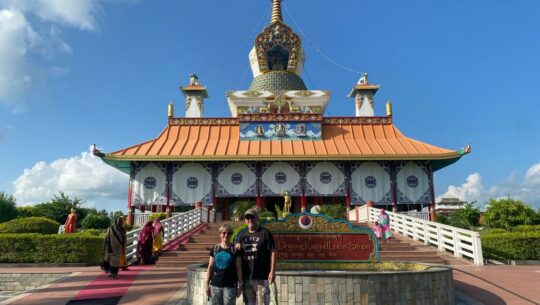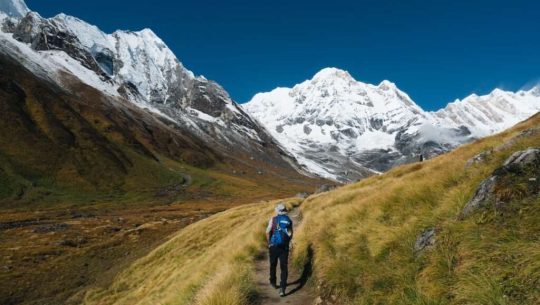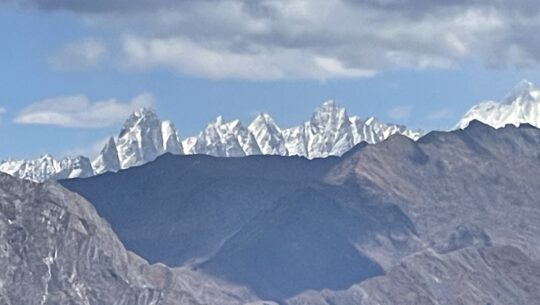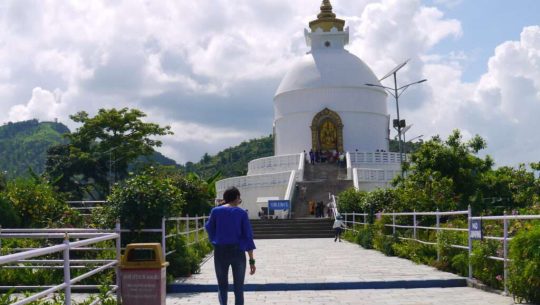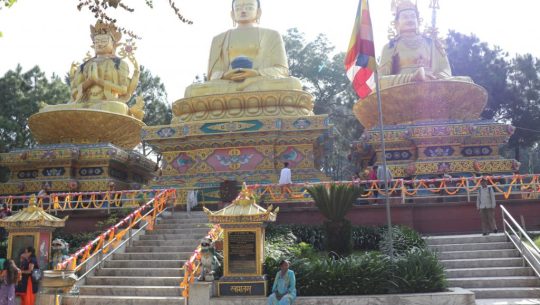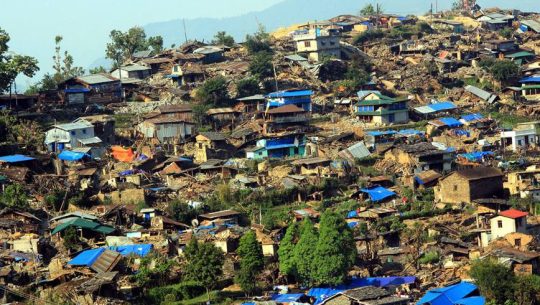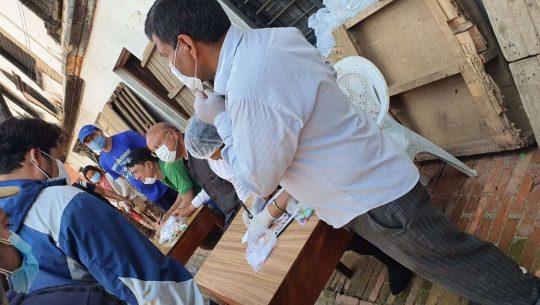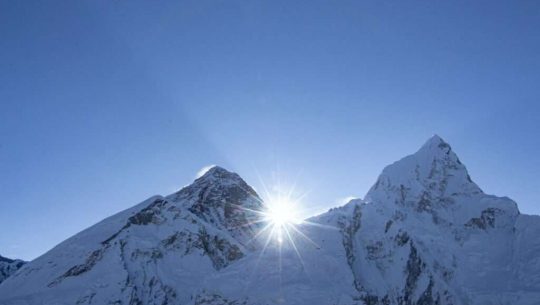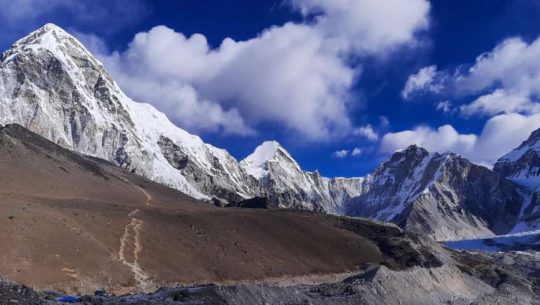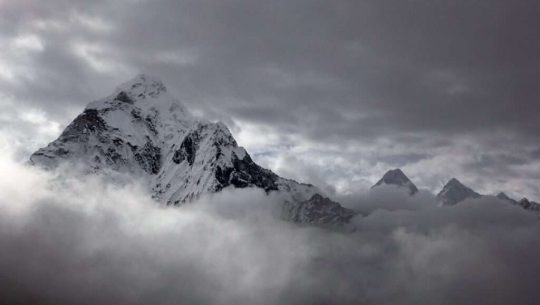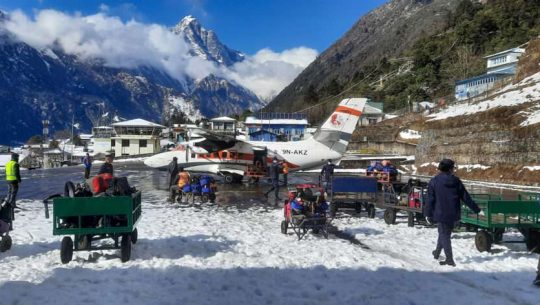“Explore the rich cultural heritage of Nepal with our Pashupati and Changunarayan Tour. Discover the ancient temples, sacred rituals, and historical architecture of Pashupatinath and Changunarayan. Join us for an unforgettable journey through Nepal’s spiritual heartland.”
Pashupatinath Temple
Pashupatinath, by far Nepal’s most popular temple, dates back to at least the 1st century CE and has been expanded and rebuilt by various dynasties of kings ever since. A common story about the origins of Pashupatinath is that it was once a forest in which Lord Siva roamed as a deer. Later, a Siva Lingam was discovered by the cow in the area, and a temple was built around it.
Depiction of Lord Pashupati
Pashupati is a God, who symbolizes many profound aspects of five each. He has five heads, which represent the five important incarnations of Shiva, which are Tatpurusha to the east, Aghora to the south, Sadyojata to the west and Vamadeva to the north, and Ishana in the Center associated with all that exists in nature and the element space. Each face has two hands, with a rudraksha mala on the right and a Kamandalu water vessel on the left.
Priesthood and Worship
Unlike other Hindu temples, the priesthood of Pashupatinath is not hereditary. Bhatt priests are from the Trilinga Dravid community of Southern India. The criteria are tough. Candidates must be between ages 25 and 40, have completed advanced study of Hinduism, be of the Trilinga Brahmin heritage, live with their wife (but not having more than one), be physically healthy, and have no visible scars on their body. The Pashupati Area Development Trust priest selection committee makes recommendations for one main priest and three assistants.
The first of the monasteries was founded by Adi Shankara in the 8th century. They must be virtuous, born vegetarians, fully trained in Vedic recitation, initiated in Pashupata Yoga, and experts in Saiva Agama.
The priestly tradition of Pashupatinath Temple has played a major role in furthering the harmonious relationship between Nepal and India for many centuries.
Entry at Pashupatinath Temple
Entry into Pashupatinath Temple itself is only allowed for followers of Hinduism, defined to include Buddhism, Jainism, and Sikhism all of which have places of worship within the precincts. “Only traditional Hindus are allowed to come inside the main temple premises, not Christians, not Muslims. They can just come and visit outside the temple.”
Other attraction at Pashupati
The main attractions in addition to the temple itself are Guheshwori, Kirateshwar, Shivalayas, Sati Gate, Kailash, Sleshmantak Forest, and the ashrams of Swami Prapannacharya and Yogi Naraharinath. There are Hindu shrines throughout the area, as well as Jain, Sikh, and Buddhist places of worship. It is a huge religious complex with great spiritual, historic, and archaeological importance. All day, every day, the temple is crowded with worshipers.
There are around 492 temples, 15 Shivalayas (shrines of Lord Shiva), and 12 Jyotirlinga (phallic shrines) to explore. It is also a cremation site where the last rites of Hindus are performed. The site and events at cremation are not for the faint-hearted; still, visitors are seen watching curiously from across the river from the hill.
It has enjoyed royal support throughout Nepal’s long history by the ruling dynasties Gopal, Kirat, Lichhavi, Malla, and Shah. The God of all Gods, Mahadev Shri Pashupatinath, and His temple are a matter of great pride for Nepal and the Nepalese people.
Pashupati as a name of Siva appears in several places in the Vedas, most significantly in the eighth part of the famed Sri Rudram chant of the Shukla Yajur Veda.
The Gopalaraj Vamsavali, the earliest chronology found in Nepal, mentions that the temple of Pashupatinath was established by a king named Supuspadeva of the first-century Lichhavi dynasty.
Here’s a glimpse into the sanctuaries and customs nestled within this revered site:
Pashupatinath Temple:
At the heart of the complex stands the venerable Pashupatinath Temple, an ancient ode to Lord Shiva, also known as Pashupati. Recognized as a UNESCO World Heritage Site, it remains a cornerstone of the spiritual pilgrimage in Kathmandu.
| Daily Rituals at Pashupatinath Temple
Pashupatinath is also one of the very few living cultural heritage sites in the world. Unlike other cultural sites or museums, Pashupatinath is the center of energy with the active participation of people at all times of the day, every day. 4:00 am: West gate opens for visitors. 8:30 am: After the arrival of Pujaris, the idols of the Lord are bathed and cleaned; clothes and jewelry are changed for the day. 9:30 am: Baal Bhog or breakfast is offered to the Lord. 10:00 am: Then people who want to do Puja are welcome to do so. It is also called Farmayishi Puja, whereby people tell the Pujari to carry out a special Puja for their specified reasons. The Puja continues till 1:45 pm. 1:50 pm: Lunch is offered to the Lord in the main Pashupati Temple. 2:00 pm: Morning prayers end. 5:15 pm: The evening Aarati at the main Pashupati Temple begins. 6:00 pm onward: Recently the Bagmati Ganga Aarati; done by the shores of Bagmati, has been gaining lots of popularity. We can see the shores of Bagmati crowded mostly on Saturdays, Mondays, and special occasions. Ganga Aarati along with Shiva’s Tandava Bhajan, written by Ravana, is carried out on evening Ganga Aarati. 7:00 pm: The door is closed. |
Vasuki Nagh Temple:
Inside the Pashupatinath Temple in Kathmandu, this west-facing pagoda-style temple is located in the northeast corner. Pashupati is on the right side of the east gate and Pashupati temple is on the left side of the west gate. Inside the temple, a one-foot-tall black stone idol of the snake god Vasuki is in the shadow of Sheshnag, who is sitting in a vagina posture. The priests are saying that these Vasukis should be worshiped before worshiping Pashupatinath. There is a belief that worshiping Sheshnag will bring prosperity and rain. The snake is considered as an ornament of Shiva. This temple was built by Pratap Malla in 1697 BS. The artwork of this pagoda-style temple is very beautiful.
Unmatta Bhairava Temple:
Another sanctuary dedicated to Bhairava underscores the multifaceted nature of devotion within the complex. Bhairav, a fierce manifestation of Lord Shiva, holds significant importance in Hindu tradition as a guardian deity. This tranquil spot is renowned for its powerful spiritual vibrations, making it an ideal place for meditation. The Temple complex reflects traditional Nepali design with intricate carvings and symbolic iconography.
Guhyeshwari Temple:
The path drops out of the forest to the large, courtyard-style Guhyeshwari Temple, built by King Pratap Malla in 1653 and dedicated to Parvati/Sati devi (the wife of Shiva) in her terrible manifestation as Kali. Entry is banned to non-Hindus, but from the path, you can see the four huge gilded snakes that support the central finial, as well as the Bodhnath Stupa in the distance.
The temple’s curious name comes from the Nepali words guhya (vagina) and ishwari (goddess) literally; it’s the temple of the goddess’ vagina. According to legend, the father of Parvati/Sati Devi insulted Shiva and the goddess became so incensed that she burst into flames, inspiring the practice of sati, where widows were burned alive on the funeral pyres of their husbands. The grieving Shiva wandered the earth with the disintegrating corpse of Parvati and her genitals fell at Guhyeshwari.
Gorakhnath Temple:
Gorakhnath Mandir stands out for its distinctive architecture a red-and-white structure. A notable feature near the temple is a golden trident, which serves as a favored backdrop for photographs.
Historically, the temple is steeped in royal connections and spiritual significance. It was constructed by Jayasthiti Malla, (1382-1395) AD king of Nepal. Dedicated to the revered Hindu saint Gorakhnath, the founder of Hatha yoga, the temple serves as a beacon for devotees of Hinduism, particularly attracting Brahmans and Chhetris.
The ambiance of Gorakhnath Mandir is one of serenity, embraced by nature with numerous trees and a resident population of macaques. The area is meticulously maintained, enhancing its status as a tranquil retreat. At night, the temple transforms with colorful lights, adding to its mystical allure.
Gorakhnath Mandir, with its rich history, spiritual importance, and natural beauty, is not only a pivotal pilgrimage site but also a fascinating destination for both spiritual seekers and general tourists visiting Kathmandu.
Vishwarupa Temple:
Bishwarup, the temple of Lord Bishnu in the Pashupati area of Kathmandu. This temple is located in the Mrigasthali forest. There are Rajput dome-style temples within a very large area. It is one of the largest temples in the Mrigasthali region. Vishwarupa is considered to be the great form of Goddess Krishna shown to Arjuna by Lord Krishna in the battle of Mahabharata. The courtyard of this temple is surrounded by sattals. The real name of this temple is Kamakameshwari. Its construction was discovered by Jang Bahadur while he was on his way to the battle of Bhote. After this, the work became successful. In 1924 BS, Jang Bahadur built this idol which is not found anywhere else in Nepal. Inside this temple is a huge 12-foot-tall metal statue. The idol of Mahadev with thousands of hands is in a state of embracing power. Worship is performed in this temple according to the Tantric method. There are various other idols in this temple complex.
Ram Mandir:
Ram Mandir in Kathmandu is a distinguished Hindu temple prominently situated on the east bank of the sacred Bagmati River. Constructed in 1871 by Sanak Singh Tondon. The temple complex is historically significant, noted for its unique Domb architectural style a rarity in Nepal. It beautifully integrates elements of Royal Gombaz and Mughal architecture, reflecting the historical Mughal influence in the region.
Dedicated to the deities of Lord Rama, Goddess Sita, and Lord Hanuman, Ram Mandir stands out as one of the finest Ram temples in Nepal due to its splendid interiors and the presence of idols not only of Rama and Sita but also of Rama’s brothers Lakshman, Bharat, and Shatrughan. The temple’s black stone idols, all facing east, are complemented by an array of artistic objects and a renowned idol of Hanuman located on the temple’s eastern side.
The temple’s interior is adorned with murals and miniature easel paintings depicting various episodes from the Ramayana, enhancing its spiritual and cultural ambiance. Notably, the temple also housed 32 sculptures of fairies with butterfly wings, contributing to the area’s name, Battisputali, meaning “32 butterflies.”
Located a short distance from the Pashupatinath Temple and featuring a viewing platform overlooking this famous site, Ram Mandir is not only a place of worship but also a cultural hub. It hosts classical music concerts every full moon evening, inviting a broader audience to partake in its serene and spiritual environment. Remarkably, Ram Mandir is one of the few temples in Kathmandu that welcomes followers of all religions to participate in aarti and experience the divine presence within its walls.
108 Shiva Lingams:
Symbolizing cosmic energy, the 108 Shiva lingams scattered across the complex serve as focal points for ritualistic worship.
Rajrajeshwari Temple:
The famous Rajarajeshwari Navdurga temple is located in the Pashupatinath temple area of Kathmandu. This temple is located on the south bank of the river Bagmati. Inside this temple, there is a full-sized statue of Nava Durga with four sides of clay. The temple is full of pagoda style and woodwork. This temple has a tradition of performing special worship on every full moon day. This goddess is also called Tantric Goddess. It was built in 1464 BS during the time of Jayadharma Malla and Jagyoti Malla.
According to the Devmala genealogy, Guheshwari had only a covered back when he appeared. Later, when King Bishnugupta unveiled the mystery idol, it is mentioned that he built a new earthen fort for sacrifice.
After visiting these goddesses, they come out of the temple premises and visit Bhashmeshwar and water is offered in the Brahmanal of the eastern Aryaghat of the temple. There are various other temples in this temple complex.
Bachhareshwari Temple:
Devoted to the goddess Bachhareswari, this temple stands as a testament to feminine divinity within the complex. Bachhareshwari Temple, a sacred sanctuary dating back to the 6th century. Adorned with intricate Tantric motifs, including depictions of skeletons and scenes of sensuality, this modest yet significant temple stands as a testament to ancient traditions and beliefs.
Pancha Deval:
A southern side from the entrance to the temple, this former temple complex. It was established in 1882 A.D and operated as being the Panchadeval Pakshala in the regime of His Majesty Surendra Vir Vikram Shah. It’s generally closed to visitors. Now it is being operated by the name of Social Welfare Centre Elderly’s Home, Pashupati since 1977 AD The total sheltering capacity of this Elderly Home is 230 persons.
Yogi Caves:
At the north end of the ghats, visible from across the river, are a series of yogi’s caves in use since medieval times and still used today by meditators.
Buddha image: South along the west bank of the Bagmati river at the cremation zone you will see a 7th-century standing Buddha image, next to the Raj Rajeshwari Temple, with its unusual curved stucco outbuildings.
Baman Tribikram:
A sculpture of Baman Tribikram erected by Lichchhavi king Man Dev is considered to be the oldest sculpture in Nepal. The idol of Tribikram in Pashupatinath area of Kathmandu is also called Dhapadev by the locals. The statue is beautiful. There are many things in the statue. This is the idol of Lord Tribikram, the king of the underworld, who takes the test of sacrifice. Vishnu came in the form of a dwarf to collect alms. When Shukracharya, the demon’s guru, refused to give alms, he poured water from Kamandalu to resolve to give alms. However, after sacrificing the earth, the sky, and the underworld according to the demands of Vamana, the devotees who were steadfast in their word, devoted themselves to the last market. And the pleased God demanded that God always be with him through sacrifice rather than asking for gifts. Therefore, along with this idol, there are also idols of Bali and her queen.
Birupakshya:
Birupakshya is the holy god of the Kirat people located in Kathmandu erected by Kirati kings of ancient Nepal, believed to be an ancestor. It is also known as Kirateswor Mahadev. Kirat people are diverse and therefore their beliefs and deities vary. It is believed that the world will be destroyed if the whole statue comes out.
Western Cremation Ghats:
The place is not meant for entertaining purposes, as hundreds of Nepalese people’s body turns into flames in this place. But it is the place you must move around. At the north end of the ghats, you will find the place of Yogi lined up sequentially, at the south end of the Ghats you will find the 7th century Buddha image.
Cremation:
It is the process of reducing a dead body to mostly tiny bits of bone resembling ash that involves exposing the body to flame and intense heat followed by pulverization of bone fragments.
Death itself reminds us of its presence by taking away the people we know, love, and are a part of our lives, from time to time. So there is no escape from this death.
The practice of cremation in Nepal at Pashupatinath dates back centuries. Arya Ghat, the place where the crematorium lies on the Bagmati River is the largest cremation area in Nepal.
The crematorium consists of different elevated platforms on the banks of river Bagmati outside Pashupatinath temple in Kathmandu. The two closer to the temple belong to the royal family and the nobles, while the remaining is for the citizens.
Earlier, Aghoris, the Hindu sadhus of India, would travel to the banks, usually from Varanasi, and wander here looking for the dead. Even today, many people claim their presence on the Bagmati river side.
It is believed that a Hindu cremated here would be reborn as a Human in his next birth.
The entire process takes 3 to 4 hours, and the ashes join the river Bagmati, which eventually leads to the Ganges river in India. You’ll be surprised by the absence of any stench or smell that accompanies dead bodies. The cleansing with sacred camphor and other substances probably does that.
There is a center for cornea dedication where the family of the departed can donate the eyes if they wish to.
Step 1. Identifying the Deceased
Identification regulations vary from state to state. The individual facility defines its specific procedures based on industry recommendations, but identification typically involves a family member confirming the identity. Upon confirmation, a metal ID tag is placed on the body, which will remain throughout the process and then be put with the remains for final verification.
Step 2. Authorizing the Procedure
The crematory must have official permission to move forward with the cremation. Most require that the person(s) making the final arrangements complete the paperwork that authorizes the crematory to proceed. (Remember that each state has its own rules about who is legally allowed to make these decisions.) The paperwork also asks for information regarding the type of container the crematory should use and who will be responsible for picking up the remains.
Step 3. Preparing the Body
Preparing the body is something the individual facility can handle in its way but usually involves cleaning and dressing. For typical cremation, the body is not embalmed unless the beneficiaries request this for a public viewing or other personal reason. Jewelry or other items are taken off for the loved ones to keep, except those requested to stay with the body, and medical devices and prosthetics that are mechanical or battery-operated are removed to avoid a reaction. Finally, the body is placed in a vessel that is combustible yet strong enough to hold the weight.
Step 4. Moving into the Cremation Chamber
The cremation then takes place in a specially designed furnace, referred to as a cremation chamber or retort, and exposed to extreme temperatures up to 1,800 degrees Fahrenheit leaving behind only ashes. Following the procedure, a cooling period is required before the remains can be handled.
Step 5. Transferring the Ashes
After cremation, the remains are inspected for any metal remnants left behind. This can be the result of items such as pins, screws, and joints the deceased had surgically placed during life. Metal is removed by hand or with strong magnets, and then it is often sent for recycling. The cremated remains are then ground down by a special processor into the final resulting ashes.
Step 6. Finalizing the Remains
Unless specified otherwise, the remains are placed in an urn (or another container) and returned to the family.
Changunarayan
It is said that the construction of Changunarayan temple was done by Lichchavi king Haridatta Burma in 2/3 BC. Changunarayan Temple, one of the famous pilgrimage sites of Nepal and also an ancient archeological monument, is located in Changunarayan Municipality of Bhaktapur District. 6 km from Bhaktapur city. Changunarayan temple in the north is important not only from the historical, artistic, and religious point of view but also as a major tourist area. Changunarayan is one of the seven world heritage sites in Kathmandu Valley. This temple, which is considered to be the oldest among the ancient temples in the valley, was listed in the UNESCO World Heritage List in 1979.
Naming
Changunarayan is also known as Champaknarayan, Changunarayan, Garudanarayan etc. There is no basis as to what the name of this temple was in ancient times. The name of this temple was Dolasikhara Swamy during the Lichchavi period. The name of the hill where the Changunarayan temple is located is Dolagiri and as the lord of its summit, he is called Dolasikhara Swami. During the Malla period, his name reached Kathin in the Nepali language. In the Nepali language, ‘Chap’ is called ‘Ch’, and ‘Forest’ is called ‘Gu’. The same Changunarayan became Changunarayan after being corrupted. In Sanskrit, it is called Champaknarayana.
History
Changunarayan Temple was built by King Haridatta Burma during the Lichchavik period, but in the Lichchavik period, another king Mandev installed an idol of Garuda in the Changunarayan temple in 521 B.C. to keep records. At the same time, it is recorded in the records that King Mandev offered land for the Guthi of Changunarayan Temple. King Mandev also had the idols of himself and his wife replaced in the Changunarayan temple.
Although there is no clear information about when and by whom this temple was built, there is a legend that a person named Haridatta Varma established Changunarayan while establishing the four Narayans of the valley (Changunarayan, Seshanarayan, Visankhunarayan, and Ichangunarayan). It is mentioned that in Saka Samvat 386 (521 B.C.) King Mandev controlled the feudal lords of the east and west worshiped Changunarayan and erected a pillar with an eagle.
The first inscription is of Mandev
The period of Nepali history from the early years of the Christian era to the end of eight centuries is considered Lichhavikal. According to cryptography, the Lichhavis ruled Nepal from the fifth century AD to the last quarter of the eighth century AD. The Changu Pillar Inscription and the Pashupati Inscription of Jayadeva II contain the genealogies of the Licchavi rulers. It reveals the long history of the predecessors of Mandev, the first historical ruler of Nepal. For the first time in the history of Nepal, Mandev issued an inscription. He issued the first Lichhavi coin ‘Manaka’. And built Manav Vihar in his memory. That became the center of Lichhavi Shakti. 14 inscriptions were issued during his reign. That inscription is dated around 386 AD. According to this, it is proved that he is the son of Dharmadev, the grandson of Shankaradev, and the grandson of Vrishadeva.
Changunarayan has been included in the World Heritage list due to its characteristics. The main reason is that it is full of religious, cultural, archaeological, historical, and artifacts. This is the oldest temple that reflects the identity of Nepal.
Based on the facts mentioned in Rishikesh Shah’s book “Ancient and Medieval” published in 1992, the time of Mandev is taken from 386-413 (AD 464-505). A record of King Mandev is considered an authentic record. He defeated Samant and Mallapuri of western Nepal in a battle, collected money from there, and donated to Changunarayan temple. Also, his donation of land and property to 108 Brahmins celebrating the victory festival is recorded in his Shaksambat 386 records. During the Malla period, the history of Nepal is found before the Shaksamvat and Rana periods during Vikram.
Legend about the temple:
It seems that the description of Nepal Mahatmaya also expresses such things about Changunarayan. It is also connected with the story of Sudarshan, an ascetic Brahmin living in this area. His cow named Kapila used to go to the foot of Champak tree every day and express all her milk there. A handsome man appeared from the Champaka tree, ate cow’s milk and then disappeared for seven days. Sudarshan saw the Brahmin in the process of milking the cows in his house after they were not milked. Seeing that, the Brahmin got angry and pierced the man’s head. Sudarshan Brahmin was very frightened to see the decapitated man appearing in the form of a conch, chakra ass. There is a description of how the Lord, offering abhayadana to a Brahmin, established himself in the same Champaka tree and seated himself on the Dolagiri mountain. It is said that the Brahmin Sudarshan himself was asked to work as a priest by Charayana established in the Champaka tree. According to which it is understood that Changunarayan the first priest was Sudarshan Brahmin.
Popular Monuments at Changunarayan
Kileshwor:
Once upon a time when the Indradi gods were rare, a demon intoxicated by Shiva’s boon began to afflict the creatures of this region. There was an uproar everywhere. Even Dolagiri mountain was shaken by the demon. The gods took shelter of Narayana. A great battle took place between Narayana and Daitya, but Narayana could not conquer the Daitya. As per Shiva’s advice, Shri Hari worshiped Goddess Sarvasvarupa. Narayan was hiding in this area. Daitya, who did not see Narayan, shook Doladri. At that time, Lord Shiva lived in a fort buried on the hillock. To the west-south of Changunarayan is the artistic temple of Kileshwar Mahadev. Lord Shiva is buried in the fort, so its name is Kileshwar Mahadev.
Chhinnamasta:
At the time when Lord Narayan was hiding, Asura was looking for Narayan. It is seen that God cut off his head and offered his bloodstream to the goddess to kill Asuravad. It is understood from the popular story that the goddess appeared directly and killed the evil demon. Devi also appears to have been installed here as Chinnamasta Bhavani. This temple is called Chinnamasta Devi Temple. Decapitated idols of Narayana can be seen in the vicinity of the temple. Thus, it is seen from Nepal Mahatmya, genealogy, and Janashruti that Sri Hari, the destroyer Mahadev and Shaktiswarupa resided at the same time. Rumors and folk tales cannot be completely brought close to the truth.
Vishworup
This 7th-century stone sculpture is a masterful depiction of a pivotal scene from the Bhagavad Gita. It beautifully illustrates the moment when Lord Krishna reveals his universal form (Vishwarupa) to his devotee Arjuna. This divine manifestation, showcasing countless forms and cosmic elements within Krishna, underscores the omnipresence and omnipotence of the deity. The intricate carving captures the awe and reverence of Arjuna as he beholds the majestic, multifaceted form of Krishna. The detailed artistry highlights the myriad faces, arms, and divine symbols that constitute Krishna’s universal form, making it a testament to the skill and devotion of the sculptor.
Vishnu Vikrant
Another remarkable 7th-century sculpture, Vishnu Vikrant portrays the legendary scene of Trivikrama (Vamana) Vishnu and Bali Raja. In this popular Hindu myth, Lord Vishnu takes on the form of a dwarf (Vamana) to humble the demon king Bali. He requests three paces of land from Bali, and then expands to the colossal form of Trivikrama, covering the earth, sky, and netherworld in just three steps. The sculpture captures the moment of this divine transformation and the astonishment of Bali. It emphasizes the victory of divine wisdom and humility over pride. The sculpture meticulously details Vishnu’s transition from the dwarf Vamana to the towering Trivikrama, highlighting the grandeur and cosmic scale of his three strides.
Narasimha
This 7th-century sculpture depicts Narasimha, the half-man, half-lion incarnation of Lord Vishnu, in the act of killing the demon king Hiranyakashipu. According to the myth, Hiranyakashipu, who could not be killed by man or beast, day or night, indoors or outdoors, receives his comeuppance from Narasimha, who emerges from a pillar at twilight (neither day nor night) and kills the demon on the threshold of his palace (neither indoors nor outdoors). The sculpture vividly portrays the fierce yet protective nature of Narasimha, emphasizing his role in preserving dharma by protecting his devotee Prahlad, and vanquishing evil. The dynamic and intense expression of Narasimha, combined with the intricate detailing of his leonine features and muscular human form, creates a powerful visual narrative of this mythic encounter.
Historical Pillar:
The Changunarayan monument features a historically significant inscription, which is considered to be the oldest in Nepal. This stone inscription pillar was erected by the Lichhavi King Manadeva in 464 AD, marking an important artifact in Nepalese history.
Garuda:
Garuda, the mythical flying vehicle of Lord Vishnu, is depicted at the monument. Garuda is characterized by its human face and is revered as a devoted servant of Vishnu.
Statue of Bhupalendra Malla:
This statue represents King Bhupalendra Malla of Kantipur and his queen Bhuwan Lakshmi, adding to the rich tapestry of historical figures commemorated at the site.
Chanda Narayan (Garuda Narayan):
A 7th-century stone sculpture of Vishnu riding on Garuda, known as Chanda Narayan, is prominently featured. This significant piece of art has been depicted on the 10-rupee paper note issued by Nepal Rastra Bank.
Sridhar Vishnu:
The monument houses a 9th-century stone sculpture of Sridhar Vishnu, depicting Vishnu, Laxmi, and Garuda standing on pedestals adorned with various motifs, showcasing the intricate artistry of the period.
Vaikuntha Vishnu:
Another notable sculpture is the 16th-century Vaikuntha Vishnu, which portrays Vishnu seated in the Lalitasan position on the six-armed Garuda, with Laxmi seated on his lap, illustrating the divine harmony and craftsmanship of the era.
Kalika Cave:
Kalika Cave, also known as Ajima Cave, is situated in the southern part of Changunarayan. Kalika Cave holds religious and historical importance, often associated with local legends and spiritual practices. It is a place where devotees come to worship and seek blessings from the deities represented within the cave.
Robinson Crusoe Holidays offers a wide range of travel and tourism activities in Nepal, catering to various interests such as adventure, culture, spirituality, and relaxation. Here are some of the notable activities and tours they provide:
Multi-day Tour
Yoga Tour in Nepal Brief Insight
Yoga physical is a mental and spiritual practice or discipline which originated in ancient Nepal. Yoga is one of the six Astika (orthodox) schools of Hindu philosophical traditions. Yoga Tour in Nepal is a great experience in the Himalayas.
Outline Itinerary
- Day 1: Arrive in Kathmandu or your Destination
- Day 2: Visit Buddhanilkanth, Kapan and Bauddha Nath
- Day 3: Visit Namobuddha, Panauti and Bhaktapur
- Day 4: Visit Chovar, Pharping, Kirtipur and Swyambhu
- Day 5: Drive from Kathmandu to Pokhara and explore
- Day 6: Explore Pokhara then Drive from Pokhara to Kade and hike to Australian Camp
- Day 7: Trek from the Australian camp to Sarankot via Kaski Kot
- Day 8: Sarankot to Pokhara then back to Kathmandu
- Day 9: Final departure
Everest Region

